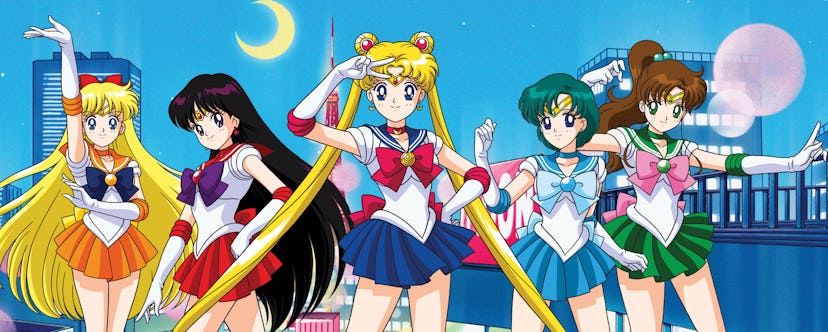W TV Club: Sailor Moon’s Lasting Imprint on Pop Culture and Fashion
Digital designer Tilden Bissell urges you not to sleep on a colorful piece of escapist content—and the blueprint for much of what Western animation is today.

Welcome to the W TV Club, a spin-off series of W Movie Club, in which W magazine’s editors pick a season of a television show they’d recommend you binge-watch while in quarantine. This week, digital designer Tilden Bissell discusses the impact Sailor Moon has had on the worlds of fashion, pop culture, and animation.
The most talked-about (and memed) show on streaming this summer wasn’t a prestige drama—it was Avatar: The Last Airbender, a decade-old kids’ cartoon, coming to Netflix. In May, HBO Max launched with most of the Studio Ghibli catalog, a collection that has managed to elude streaming platforms stateside for years, to the delight of longtime fans in lockdown. As live-action mediums struggle to go back into production, many (but not all) animated shows can continue, so it makes sense that viewers are flocking to the newest series—and old favorites.
Sailor Moon has been on Hulu since 2014, yet I haven’t bothered to revisit the wildly popular anime until I found myself in quarantine. It’s fitting—the manga’s creator, Naoko Takeuchi, has commented that her development of the manga stemmed in part from her own loneliness. The plot of Sailor Moon is simple enough: an unmotivated teenager named Usagi Tsukino receives a magical brooch that transforms her into a lunar soldier tasked to save Earth from the forces of evil. She then meets the other Sailor Senshi—Sailors Mercury, Venus, Mars, and Jupiter—and her supportive but slightly milquetoast soulmate, Tuxedo Mask. Ascribing mostly to a “monster of the week” format, each episode is a kaleidoscopic adventure, while still featuring satisfying season-long villains like the Dark Kingdom or Death Busters.
On top of being a colorful piece of escapist content, Sailor Moon is the blueprint for much of what Western animation is today. As highlighted by Priyanka Bose, the transformation scene alone is constantly referenced across shows such as Steven Universe, She-Ra: Princess of Power, and even South Park. It’s also worth noting the LGBT representation, though heavily censored in the initial English-dub, was fairly groundbreaking for the time. The Outer Senshi—specifically Sailors Uranus and Neptune—are the show’s second queer couple (after season one’s delightfully petty Zoisite and Kunzite) and make season three one of the most memorable of the series.
Though at times campy and melodramatic, Sailor Moon is a show that is as chic as it is saccharine. The fashion in the show in and of itself is pretty major—the Sailor Senshi’s civilian outfits are perfect for fall dressing—but it’s also provided ample influence on the designers of today. Sandy Liang has long documented her love of the show throughout her various collections and Instagram feed—from her Moonie shirt in 2019 to her more recent Luna puffer dotted with anime eyes, plus jewelry named after planets (and inspired by Sailor Scouts). And while not the original inspiration of her signature crescent moon print, Marine Serre has gone on record saying she doesn’t mind people attributing it to the popular manga character in their interpretations.
I’m not alone in my desire to return to the cult classic cartoon—look no further than Kristen Bateman’s piece about how she turned to Sailor Moon-inspired makeup to get through quarantine or W’s own senior digital editor Maxine Wally’s about the Instagram account whose sparkly Sailor Moon tchotchkes made her smile throughout the lockdown. And as Taylor Roberts pointed out on her own Instagram, there’s even a Sailor Moon screencap for most current events. On that note, if Sailor Mars can wear a mask while fighting the forces of evil with a cold, you can do it for the rest of 2020.